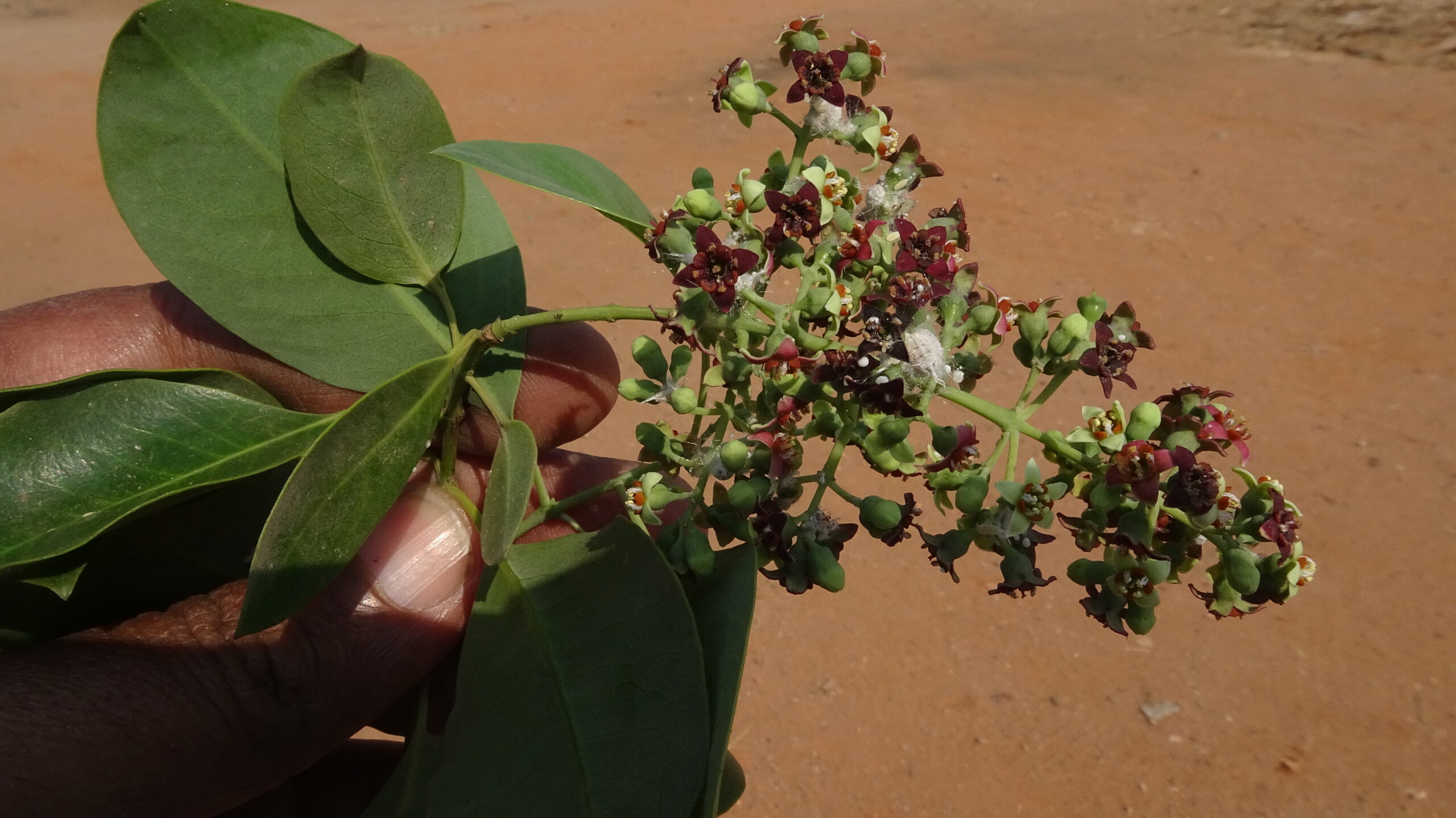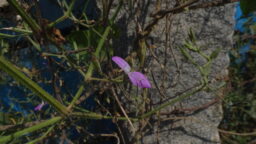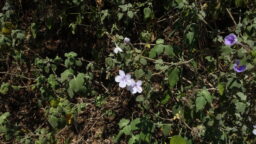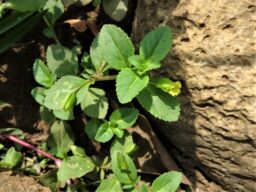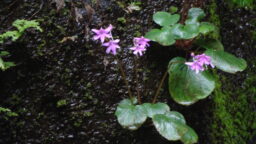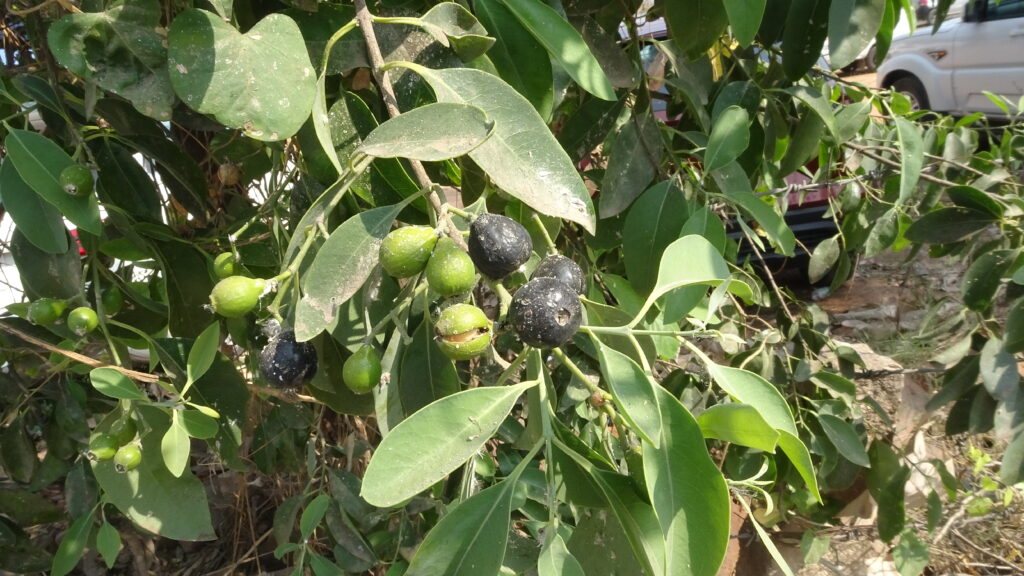
Common Name: Indian Sandalwood. Tamil Name: Chandanam
Sandal wood tree grows to a height of about 9 meters. It is a native of Peninsular India and mostly found in dry deciduous and scrub forest areas. The simple leaf is arranged in an opposite manner. The leaf stock and leaf length are 1.7 cm and 6.5 cm respectively. The leaf shape is elliptic-oval. The leaf is bright green color on the upper side and the lower side comes in a paler shade of green. The leaf base is cuneate and tip rounded. The inflorescence is in the form of an axillary paniculate cyme. The flowers are red/green in color with five tepals and have a star like shape and measure about 4 mm across. Five stamens are seen jutting out of the flower from a disk-like base. The young fruit is green in color and obovate in shape. The mature fruit is a globose fleshy drupe, black in color and measure around 1.5 cm and contain a single seed. The sandal wood tree is exploited for its much priced fragrant oil. The tree starts to produce the oil only after 10 years of growth. The tree is over-exploited in the wild for its much priced oil and for other religious purposes. The plant has been designated as ‘vulnerable’ by IUCN. The commercial plantation of this tree is problematic as it has complex parasitic (partial parasitic) association with other plants for nutrition and water. The preferred host plants include Acacia nilotica, Senna siamea and other Leguminosae plant species. This tree is commonly seen in Coimbatore, often planted in house gardens. Birds are attracted to the fruit and seeds are disbursed far and wide. The tree can be harvested only after securing permission from the Government.

